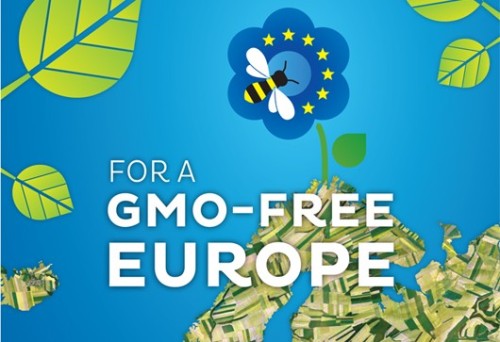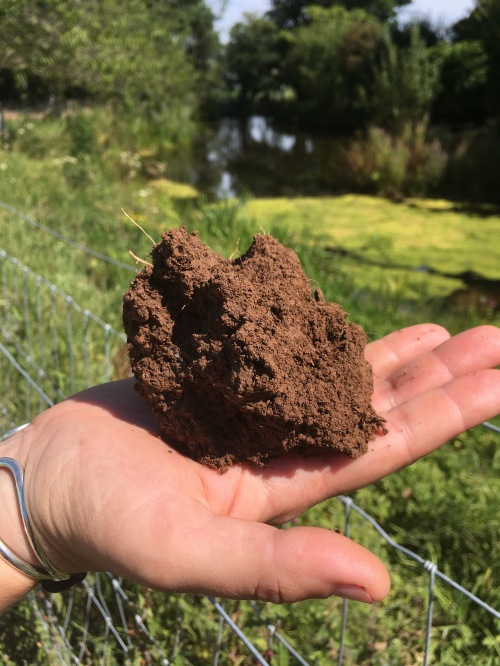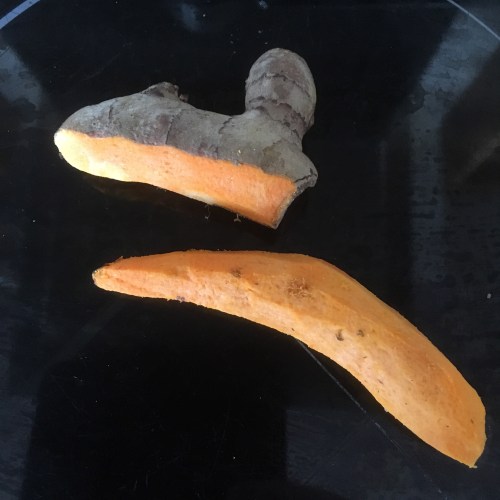 I wrote this long piece about good bacteria for the Sustainable Food Trust, which has given me permission to republish it here (slightly edited).
I wrote this long piece about good bacteria for the Sustainable Food Trust, which has given me permission to republish it here (slightly edited).
Thank you, Sustainable Food Trust.
♫ Good, good, good, good bacteria ♫
Recent research on the role of bacteria suggests we need a radical rethink about what makes us healthy.
Thanks to advances in genetic sequencing, scientists are starting to discover, categorise and understand the importance of the vast universe of microbial organisms that lives invisibly on, in and around us.
In May 2015, results from studies conducted by Tim Spector, professor of genetic epidemiology at King’s College London, showed that a ten-day diet of junk food caused the loss of 1,300 species of beneficial bacteria in the intestines.
Professor Spector said: “Microbes get a bad press, but only a few of the millions of species are harmful, and many are crucial to our health.”
Instead of bacteria being our deadly foe, it turns out the vast majority are really our best friends – and our oldest.
According to the Human Microbiome Project, our ‘live-in’ molecules – the single cell organisms including bacteria and fungi that are neither plant nor animal but in a category of their own – have evolved symbiotically with us and our pre-historic ancestors since time began.
Like the best of relationships, we are inter-dependent. We provide energy via food to our single-cell friends: in return, they perform a myriad of life-giving activities.
As it is in our gut, so it is in the soil. The idea articulated by Sustainable Food Trust, director Patrick Holden, that healthy topsoil thrives because of microbial activity – functioning in a similar way to human digestion – illustrates the interconnectedness of everything.
In the dark of topsoil, microscopic microbes perform vital tasks to maintain the health of soil life. Meanwhile, in the dark of our digestive system, trillions of tiny microbes are likewise busy keeping our bodies healthy.
The role of beneficial bacteria is multi-functional. A key role of both soil and gut bacteria is digestion. These beneficial bacteria break down nutrients into digestible forms that can be assimilated by the plant’s roots, or the gut lining in our intestines, enabling both plants and humans to thrive.
As well as bacteria being an essential component of digestion, beneficial bacteria also help to repel disease and are a key component of a healthy immune system.
The number of microorganisms living invisibly in the world is mind-boggling: one teaspoon of rich garden soil can hold one billion bacteria along with fungi and other microorganisms.
As for the bacteria in a symbiotic relationship with us, the majority live in the walls of our intestines. This community of diverse bacterial species, called the gut microbiome, weighs about two kilos.
There is a clear analogy between soil and human digestion and, according to nutritionist and author Daphne Lambert, there is also a direct relationship. In her book Living Food: A Feast of Soil and Soul, she traces the origins of soil eating for health, drawing on recent studies to argue for increased exposure to soil to build immunity.
Daphne Lambert writes, “Today our food industry kills off these organisms and together with our excessively clean households this means few if any of these soil-based organisms manage to find their way into the human digestive system.”
According to Daphne Lambert, there is evidence to suggest that the ingestion of soil-based organisms from a vibrant, healthy soil enhance the functioning of our gastrointestinal tract.
But our modern lifestyles break the link between healthy soils and healthy humans, with fewer people than ever before working on the land and every last trace of soil washed off the vegetables we buy.
But what about the scary bugs? Small children are naturally drawn to soil but it’s usually us adults who start freaking out about the dirt. Take heart that the benefit of handling soil far outweighs the risks. First, the good bacteria outnumber the bad. Second, we develop the capacity to deal with the bad ’uns by the very practice of being exposed to microbes in the first place.
Initially proposed in 1989, the hygiene hypothesis in medicine shows that we do small children a disservice by keeping them in a sterile environment. Getting down and dirty is how our immune system learns to defend us from disease.
Children who develop healthy immune systems in this way will doubtless be better able to resist infections. However, a word of caution: a great deal of our soil has had its inherent health degraded by intensive agricultural methods and intensive farms can be breeding grounds for dangerous bacteria such as E.coli O157, so hand washing hygiene is called for in some situations.
Ideally, we should be able to ditch our antibacterial cleaners too. Rather than obliterating all bacteria, we could take a leaf out of traditional Asian cultures and clean our houses with a fermented solution of probiotics that feeds good bacteria, which then eat up the bad smells, dirt and grease caused by harmful bacteria.
(Yet, in our spoiled and imperfect world there will be exceptions here too, and caution is needed, especially when preparing chicken, which is so often a source of campylobacter infections).
Good bacteria in food
Just as we can colonise our homes [I swear by Libby Chan probiotic cleaner!] and soil with good bacteria, so we can restore health to our gut.
When it comes to the human diet, nutritional therapists commonly agree that the best way to create good gut bacteria via what we eat is to eat more as our ancestors ate and adopt a three-step approach: reduce sugar, raise fibre and eat fermented foods.
Take sugar first. Or rather don’t! Bad bacteria feed on sugar and they start complaining when they don’t get it. Based on a review of recent scientific literature, US researchers found that gut microbes may cause us to crave the very nutrients they need to grow, by releasing signalling molecules into our system.
You can diminish bad bacteria by giving your good bacteria a boost with prebiotics, or fibre on which good bacteria feed. As Daphne Lambert explains:
“The intestine lacks the enzymes necessary to break down oligosaccharides so they move through to the colon where they serve as food for beneficial existing bacteria so they grow and multiply, squeezing out bad bacteria. Oligosaccharides are found in many foods but there is a major one for each season: onions in winter, asparagus in spring, leeks in summer, and Jerusalem artichokes in autumn. Nature really has got it right.”
Finally, fermented foods are important. Bacteriology may be in its infancy, but, according to author and food campaigner, Michael Pollan, every traditional food culture has fermented food in its diet. Think sauerkraut, chocolate, tamari and kimchi.
“Fermented foods not only produce amazing tastes, they also increase nutrients,” says Daphne Lambert. “Growing colonies of microbial cultures makes nutrients more available, and also increases them, including vitamins and especially Vitamin B.”
Fermented foods are low-energy – they require no cooking or refrigeration. By preserving summer foods throughout long winters or saving food from decomposition in tropical heat, humans have survived inhospitable climates. Captain Cook famously took sauerkraut (fermented cabbage) to reduce scurvy on his sea voyages.
Check out fermentation workshops including by Daphne Lambert, [and Annie Levy who turned me on to the joys of fermentation by sending me a jar of kimchi through the post!].
Most bacteria are notoriously hard to culture in a petri dish, so our knowledge of bacteria’s many uses is still severely limited. One of the most widely known bacteria is Lactobacillus acidophilus – the Latin for acid-loving milk bacterium – which predigests food, transforming, for instance, milk into yogurt.
“The more foods you eat that aid digestion the better, and in many cases these foods are beneficial because of bacteria,” says Daphne Lambert. “It is about understanding our relationship with bacteria – not annihilating them. By declaring war on bacteria, we are declaring war on life itself.”
The following is from a collection of over 80 recipes from Daphne Lambert’s excellent book, Living Food: a Feast for Soil and Soul, which celebrates a gastronomy that is good both for human and planetary health.
Fermented vegetables
Cabbage is cheap to buy. Once fermented, it adds complex and delicious flavours – one of the joys of life.
Sauerkraut
3 medium-size white cabbage heads (about 2 kilos)
1 four-litre clean glass jar
2–3 tablespoons sea salt
Shred the cabbage and place it in a large metal bowl. Sprinkle over one tablespoon of salt and pound gently with a wooden rolling pin to help pull the water out of the cabbage. Cover with a cloth and leave overnight. The next morning, place about two inches of cabbage into the glass jar and press firmly down, sprinkle with a little salt and repeat until the jar is full. As you layer up you can add spices and herbs to flavour.
Firmly compress the layers of cabbage. Place a weight on top like a jam jar filled with water to make sure the cabbage is completely submerged by the brine (if necessary add a little water). Cover with a cloth to protect from flies. Every day, push the cabbage gently down. Let the jar sit at room temperature. After a week the cabbage has fermented sufficiently to be eaten, but you can leave it for a further couple of weeks. If you are not going to eat the cabbage straight away, fit with a lid and store in a cool, dry place where the tangy flavour will continue to develop. Once you start eating the cabbage, keep it in the fridge.
[Here is my take on Making Sauerkraut.]
Fermented grains
Many grains in different parts of the world are made more digestible through fermentation: in Japan, the soya bean is fermented into traditional fermented foods such as tempeh, soy sauce and miso. In Africa, millet is fermented for several days to produce a sour porridge called ogi, and in India rice and lentils are fermented for at least two days before making idli and dosas. Corn was fermented before using in Mexico, and, throughout Europe, grains used to be soaked overnight in soured milk ready to make porridge in the morning.
It’s easy to start soaking grains and this simple process is an enormous aid to digestion. Soak your chosen grain in water for a minimum of eight hours at room temperature. You can assist the process by adding a little fermented (sauerkraut) vegetable juice or yogurt.
Fermented whole oat porridge
By fermenting the whole oat grouts (whole oats) before cooking, the flavour of the porridge is enhanced, the grains are more digestible and there is greater nutrient bioavailability.
Place oat grouts in a bowl, just cover with water and leave at room temperature for two days. You can leave for longer if you choose to create a more intense acidic flavour. To assist the process, add a tablespoon of sauerkraut juice, apple cider vinegar or kefir to the water.
Strain the oats, saving the soak water, then simply eat the grains as they are with soaked nuts and seeds and seasonal fruits. Alternatively, you can cook the grouts, either in the soak liquid or fresh water, depending on your flavour preference. Gently heat the oats and cook very slowly until thick and creamy. Add a pinch of salt and serve with whatever you fancy.
May your good bacteria flourish!





 I wrote this long piece about good bacteria for the Sustainable Food Trust, which has given me permission to republish it here (slightly edited).
I wrote this long piece about good bacteria for the Sustainable Food Trust, which has given me permission to republish it here (slightly edited).
















